In recent years, the topic of AI has become extremely popular in various professional areas. Finance, in general, and FP&A, in particular, are not an exception. Different assumptions, theories, and emotions are associated with AI in FP&A. The FP&A Board meeting appeared to be a timely moment to discuss the challenges and experiences of AI applications in the professional community of finance leaders.
The 18th in-person Zurich FP&A Board meeting was held in the premises of Michael Page on November 4, 2025. 34 FP&A leaders, representatives of ABB, Novartis, Takeda Pharmaceuticals, Swarovski, Ecolab, Zurich Group, La Preirie, Oriflame and other companies, were welcomed to discuss the Human and AI Synergy for FP&A transformation journey.
This Board session was sponsored by Pigment with continued support from Michael Page.
Larysa Melnychuk, CEO and Founder of the FP&A Trends Group, welcomed the finance leaders and provided a brief overview of the International FP&A Board's history, mission, and objectives. Since its creation, the mission of the International FP&A Board has been to guide the development and promotion of best practices in global FP&A, identify and support new trends, skill sets, and innovations.
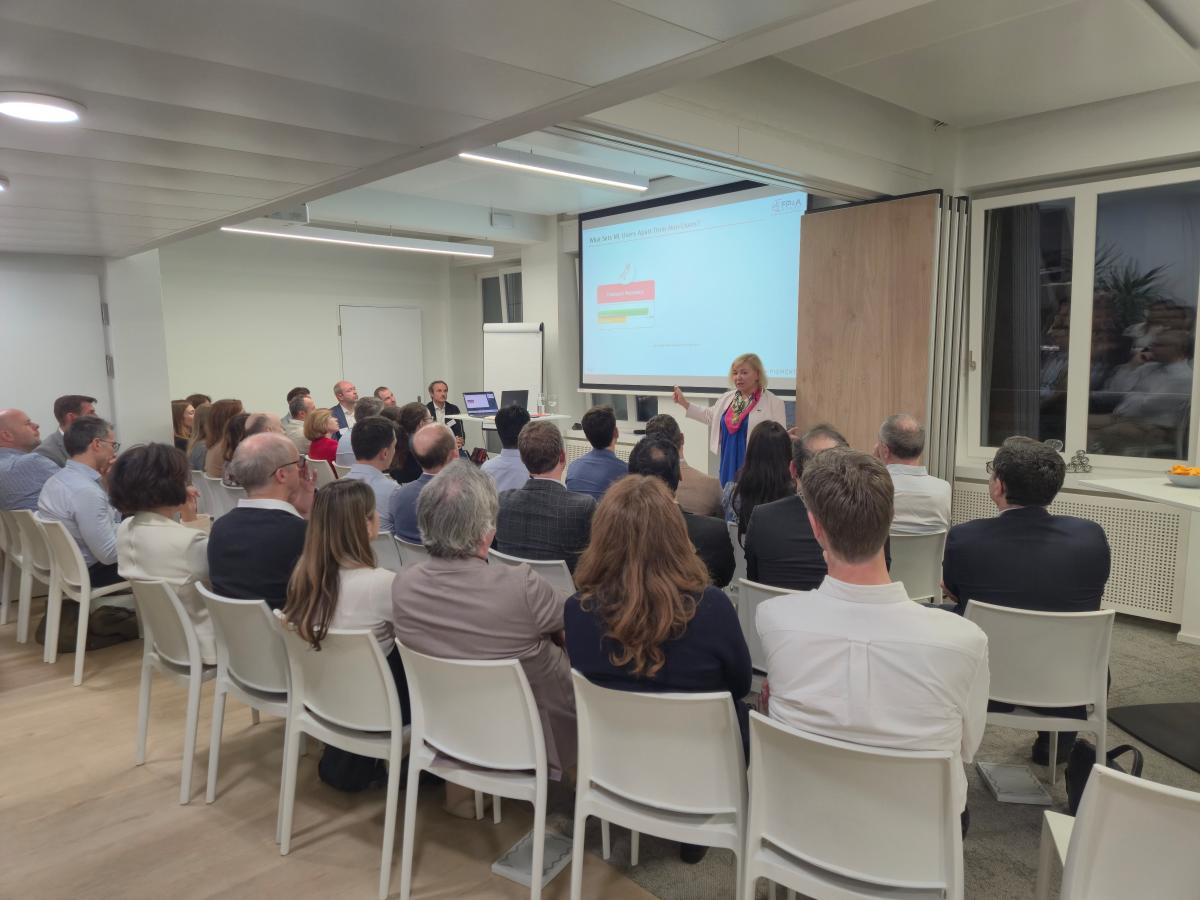
Why This Topic Matters
The theme “Transforming FP&A Together: Human & AI Synergy” reflects a new stage in the evolution of the FP&A profession, where people and technology work in harmony rather than isolation. Human creativity, ethical reasoning, and strategic understanding combine with AI’s analytical power, scalability, and speed to form an augmented model of decision-making.
This balance is positioned in the framework as essential for sustainable transformation, highlighting the continued importance of FP&A professionals as interpreters and storytellers behind AI-driven insights.

Figure 1
Discussion started with quick introductions of participants and sharing of initial thoughts on what AI adoption in FP&A is associated with. The great news is that the AI topic brings mainly positive comments and is associated with a revolutionary event, a promising and transforming enabler for the FP&A process.
The discussion began with a sharing of the topic, "How is AI currently being used within your Finance/FP&A function?" Larysa presented statistics that reflected a relatively low usage of AI at the current stage. The most popular way of usage is to automate parts of FP&A processes and provide summaries of insights for the FP&A report.
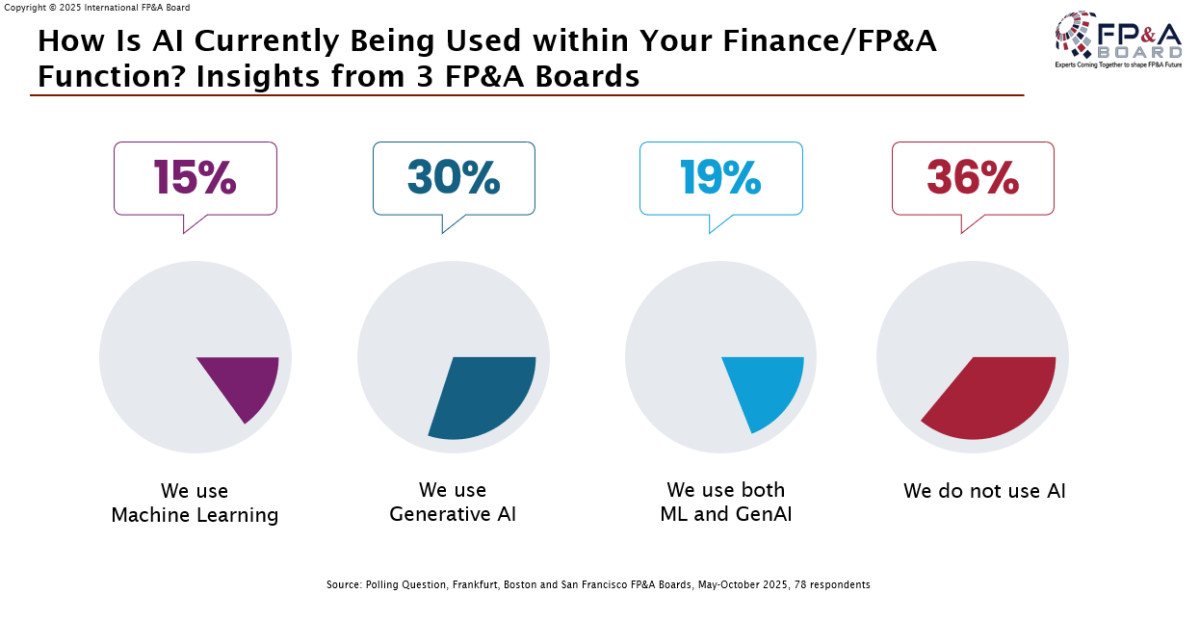
Figure 2
Major challenges in AI adoption lie in Technical, Resourcing and Cultural&Leadership dimensions. Seven challenges were presented for further discussion.
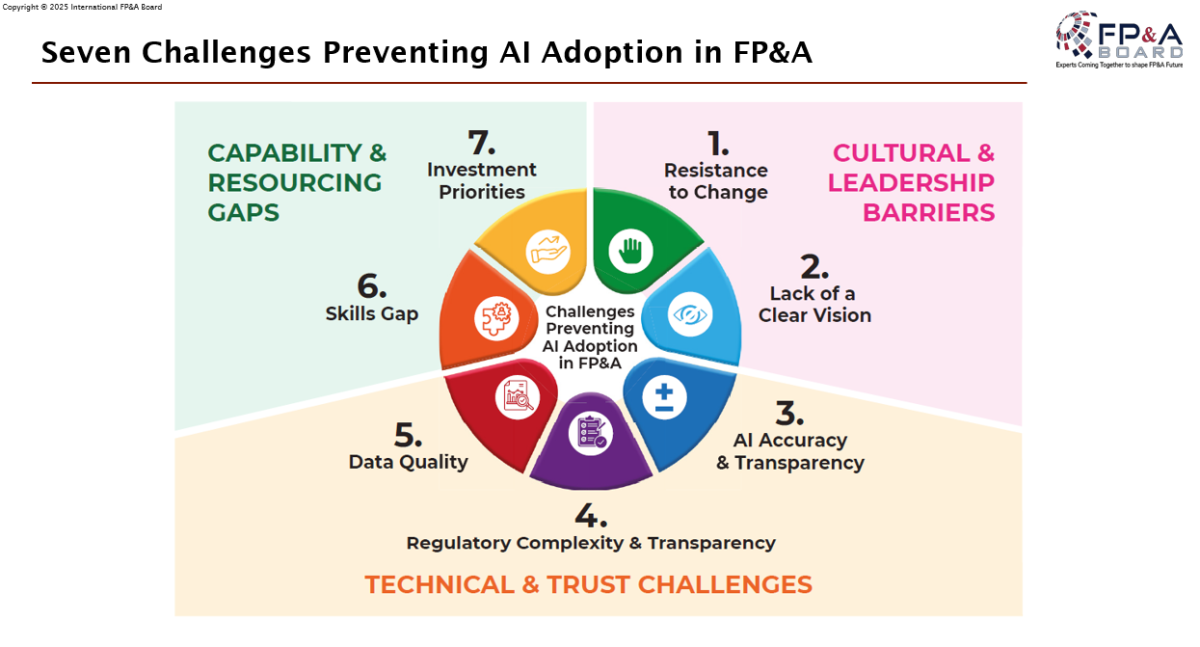
Figure 3
The Two Minds of AI in FP&A
An important framework shared during the Zurich session was “The Two Minds of AI in FP&A,” illustrating how Machine Learning and Generative AI complement each other. Machine Learning acts as the Mathematician, learning from numbers to improve forecasting accuracy and scenario planning. Generative AI represents the Storyteller, learning from language to automate narrative reporting and simulate decision outcomes.
Together, these two dimensions define “Intelligent FP&A,” where prediction meets communication.
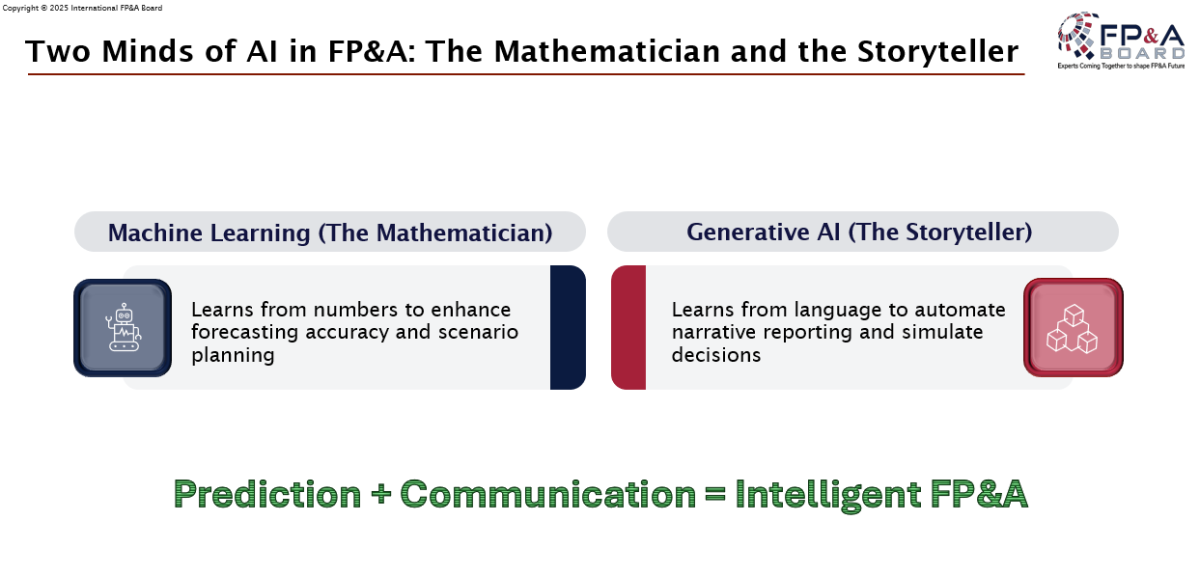
Figure 4
A key highlight of the meeting was the sharing of practical experiences and case studies by three distinguished professionals:
Michael Nudelmann, VP Group Controlling and Head of Group Financial Planning & Analysis at SWAROVSKI, presented the case on the FP&A Transformation Journey in the area of AI in forecasting.
Andreas Stoller, Group CFO at Trafag Group, spoke about Human and AI Collaboration for Financial Decision-Making, covering challenges in resourcing and leadership.
Jérôme Libioul, Managing Director at Statera, guided the audience through a practical example of an AI Analyst Agent for Finance Variance Analysis.
Meeting continued with Group Work brainstorming and sharing insights on the topics:
- How to implement Generative AI in FP&A workflows to improve reporting and decision-making?
- How can Machine Learning be implemented effectively to enhance forecasting and analytics in FP&A?
- How can we ensure successful collaboration between humans and AI in FP&A processes?
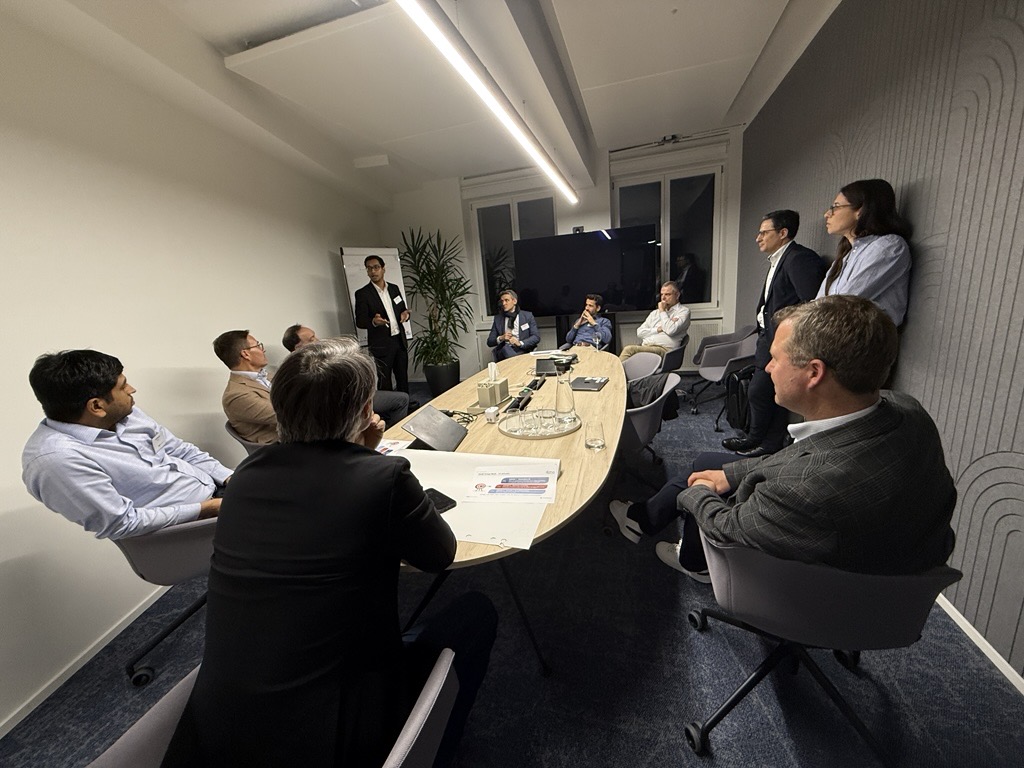
FP&A Trends AI Maturity Model
The FP&A Trends AI Maturity Model was presented to help participants assess where their organisations currently stand in the AI transformation journey. It defines five progressive stages of development:
- Manual Foundation – siloed data and manual workflows.
- Early Experimentation – isolated pilots, limited governance.
- Integrated Intelligence – connected systems and cross-functional collaboration.
- AI-Enabled FP&A – unified platforms with AI embedded in daily processes.
- AI-Native and Visionary – autonomous decision-making supported by responsible governance.
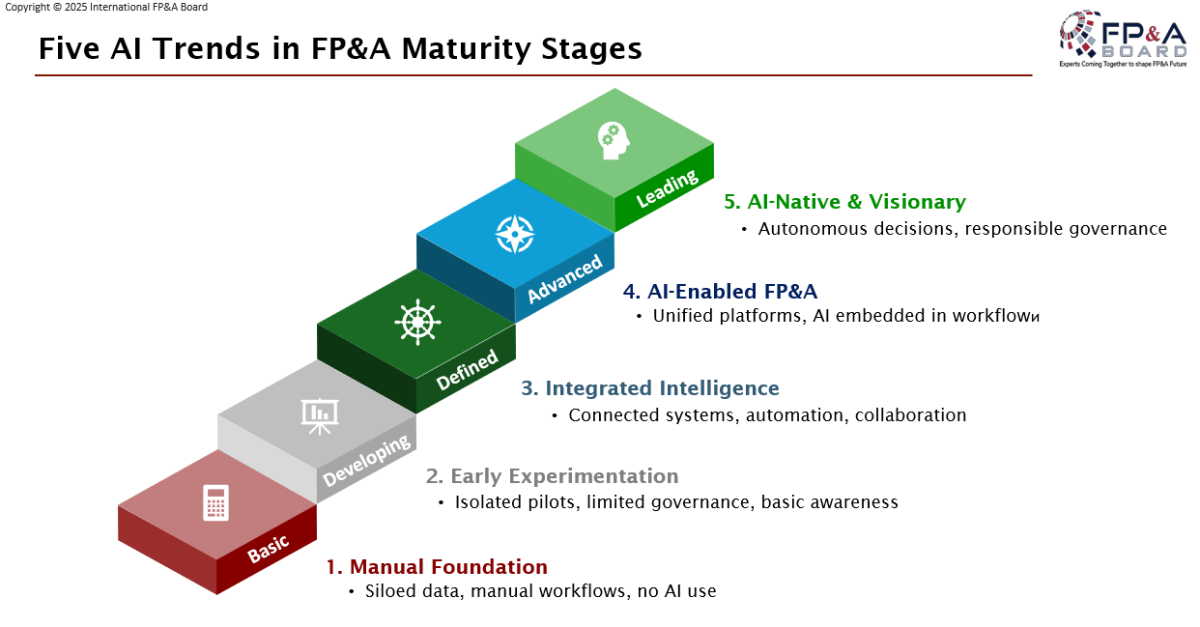
Figure 5
Conclusion of the groups on AI Adoption can be summarised in vital areas for success:
- Importance of defining roles and responsibilities, setting the governance of the process (game plan) transparent for stakeholders.
- Setting measurement of progress (KPIs).
- Change management and engagement.
- Consistent implementation where repetitive steps are measured and improved (using the formula: Repeat/Measure/Improve).

As for any change, it is important to secure a safe environment for stakeholders. The key to efficient contribution from specialists engaged in the process will be fostering a sense of trust, allowing them to focus on improving the process without fear of jeopardising their job.
Governance and Trust in AI
The session concluded that trust and transparency are crucial to the sustainable adoption of AI in FP&A. To govern AI responsibly, teams must ensure the quality of their data, the clarity of model explanations, and adherence to ethical use standards. Human oversight remains non-negotiable; every AI-driven insight should be reviewed, challenged, and contextualised by finance professionals.
Participants summarised this as a shift “from automation to assurance” , where technology supports human intelligence, not replaces it.

Figure 6
Insights gathered from various International FP&A Board chapters worldwide, enhanced by the latest meeting in Zurich, offer a comprehensive perspective on the current landscape and future evolution of FP&A. The growing focus on AI, Machine Learning, storytelling, and strategic decision support highlights the ongoing transformation of the discipline.







